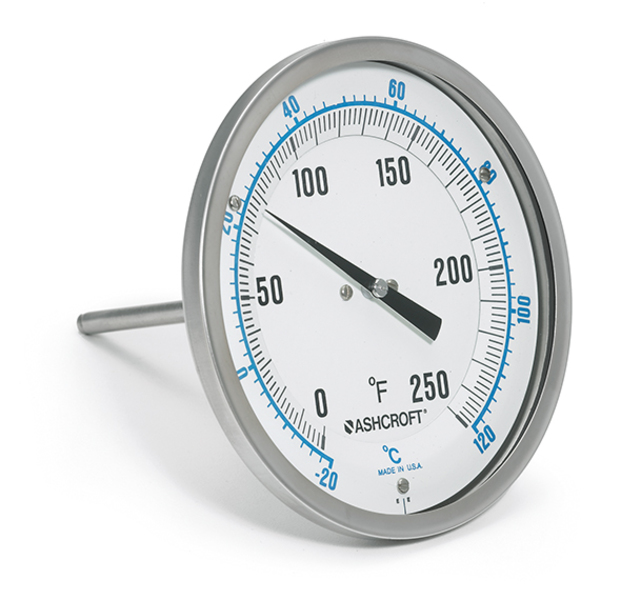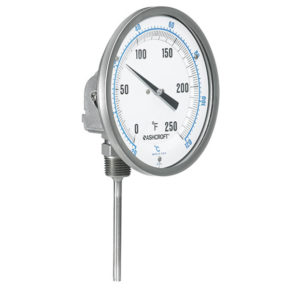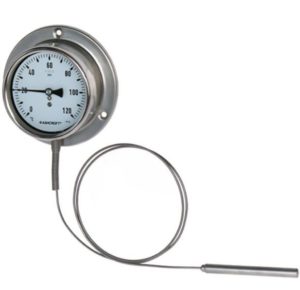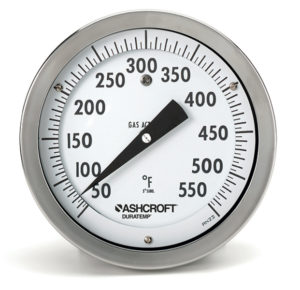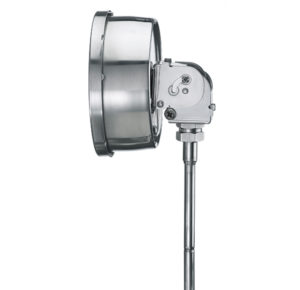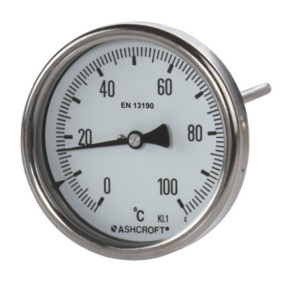

C Bimetal Thermometer
C Bimetal Thermometer
Industrial Market:
- General Industrial
- HVAC
- Equipment Skids
Medical and Life Sciences:
- Pharmaceutical / Biotech
- Food and Beverage
Data Sheets
Installation + Maintenance
- 📄 Instruction manual Bimetal Thermometer ThermAdapKit 🇬🇧
- 📄 Instruction manual Bimetal Thermometer Model CI 🇬🇧
Industry Brochures
Product + Technical Information
- 📄 Product Information Page Date Code Identification BM-PI-9 🇬🇧
- 📄 Product Information Page Bimetal Üart Numbers BM-PI-08 🇬🇧
Safety Data Sheets
Key Features
Custom dials available
Hermetically sealed case to prevent entry of moisture, interior corrosion and coil freeze-up
Maxivision® dial for easy readability and parallax elimination
Silicone dampened coil for reduction of pointer flutter on high vibration application and provides improved response times
Markets & Applications
HVAC-R
Food and Beverage
Biotech
Machine Automation
Pharmaceuticals
- Specifications
- Downloads
Case Style
Crimped compact case
Accuracy
1% of span ASME B40.200 (B40.3 Grade A)
Dial Size
2"
3"
5"
Ranges
-50 ... 500°C
Wetted Parts Material
Stainless steel 304 (1.4301)
Ingress Protection
IP66 / NEMA 4X
Case or Body Material
Stainless steel 304 (1.4301)
Stem length
63 ... 1500 mm
Process Connection Location
Lower
Centre back
Mounting
Stem
Dampening
Silicone dampened coil
Process Connection Style
Fixed thread
Data Sheets
Installation + Maintenance
- 📄 Instruction manual Bimetal Thermometer ThermAdapKit 🇬🇧
- 📄 Instruction manual Bimetal Thermometer Model CI 🇬🇧
Industry Brochures
Product + Technical Information
- 📄 Product Information Page Date Code Identification BM-PI-9 🇬🇧
- 📄 Product Information Page Bimetal Üart Numbers BM-PI-08 🇬🇧
Safety Data Sheets
- Category: Indicating Thermometers

